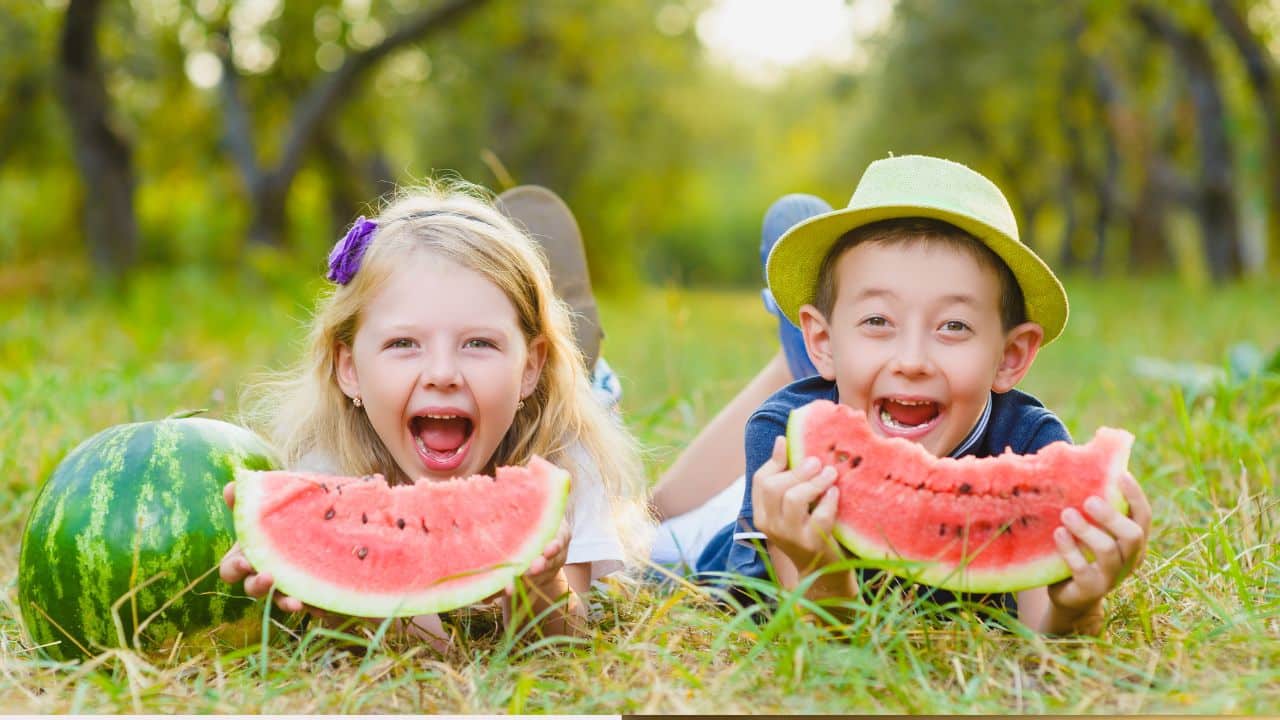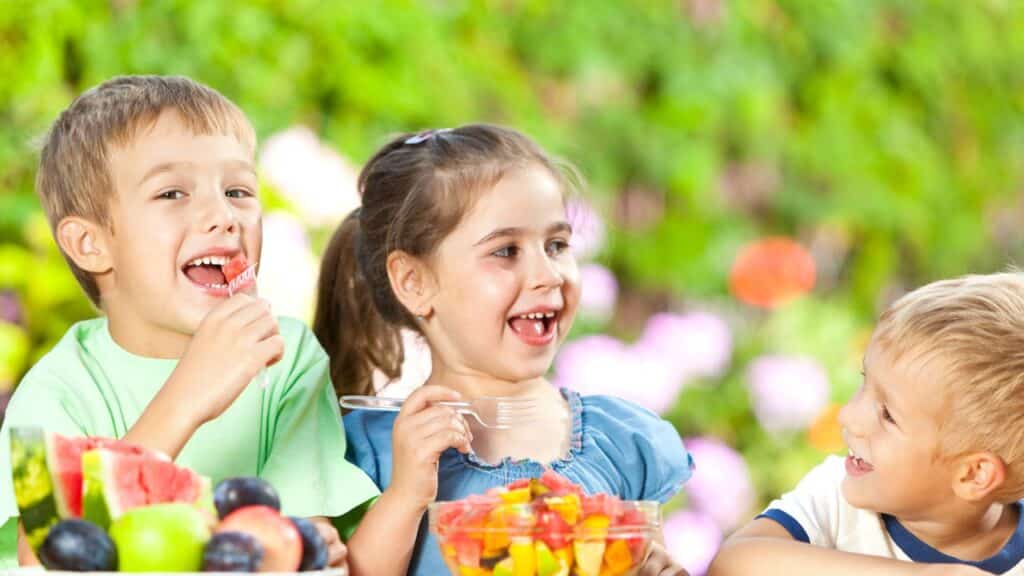Getting kids to eat healthily can be challenging for many parents. Today’s convenience foods and sugary snacks often make encouraging children to make nutritious choices a challenging task. However, teaching children healthy eating habits early on can have a lasting impact on their health and well-being.
By transforming healthy eating into an engaging and entertaining activity, parents can inspire kids to make nutritious choices, enjoy their food, and develop a positive relationship with what they eat. Here are eight creative ways to make healthy eating fun for kids, enjoyable, and educational for children.
1. Involve Kids in Meal Planning and Preparation
Involving children in planning and preparing meals helps them understand where their food comes from and why certain ingredients are healthier than others. By giving kids ownership over their meals, they’re more likely to try new foods and feel proud of their creations.
Steps to Get Started
- Weekly Meal Planning: Sit down with your child once a week to plan meals together. Encourage them to choose a vegetable or fruit they want to incorporate into a meal.
- Shopping Together: Take kids grocery shopping and allow them to pick out produce or ingredients. Explain how different foods help the body grow and stay strong.
- Simple Cooking Tasks: Give them simple tasks like washing vegetables, stirring, or arranging ingredients. Younger kids can help mix ingredients, while older children may be able to handle chopping with supervision. If you plan on making a homemade cheese sauce for nachos, let your child help by sprinkling in the shredded cheese while you stir. You can use this opportunity to teach them how to measure ingredients properly, which builds both cooking skills and confidence.
Benefits
This process builds excitement and interest in food. Kids who help in the kitchen tend to be more adventurous with trying new foods and are less likely to reject healthy ingredients they chose themselves.
2. Make Healthy Food Look Fun
Presentation is everything when it comes to kids, and visually appealing meals can make a big difference in their willingness to eat healthy foods. Fun presentations can turn simple vegetables and fruits into irresistible snacks.
Fun Presentation Ideas
- Food Art: Arrange fruits and veggies in the shape of animals, flowers, or faces. For example, create a “fruit rainbow” with strawberries, oranges, pineapple, kiwi, blueberries, and grapes.
- Bento Boxes: Pack lunches in bento boxes, using colorful dividers to separate different foods. This creates a sense of adventure and discovery, especially when each section has a different food.
- Skewer or Toothpick Foods: Use skewers or colorful toothpicks to make fruit and veggie kabobs. Kids love bite-sized, easy-to-hold foods that they can assemble and eat on their own.
Benefits
Making food visually engaging encourages kids to try new fruits and vegetables while enjoying the creative process of assembling their plates.
3. Create a Fun Reward System
Rewards are a natural motivator for kids. A reward system helps reinforce healthy eating as a positive and desirable activity rather than a chore.
How to Implement a Reward System
- Healthy Eating Chart: Create a chart where kids can add stickers for every serving of fruits, vegetables, or whole grains they eat. Set a goal for the week and celebrate their progress.
- Non-Food Rewards: Offer small rewards like extra playtime, a family movie night, or a special activity when they reach their goal. Avoid food-based rewards to maintain a positive association with healthy eating.
- Healthy Eating Badges: Design “badges” for kids to earn, like “Super Veggie Eater” or “Fruit Fanatic.” This adds an element of accomplishment and can boost their motivation.
Benefits
This approach reinforces the idea that making healthy choices is rewarding in itself, helping kids associate nutritious foods with positive feelings and accomplishments.
4. Make Smoothie and Juice Time Fun
Smoothies and fresh juices are an excellent way to introduce fruits and vegetables in a format that’s easy and fun for kids to enjoy. Allowing kids to help make smoothies or choose ingredients can make the process even more exciting.
How to Make Smoothies and Juices Appealing
- Colorful Combinations: Create smoothies in various colors, such as green (spinach, banana, and kiwi), purple (blueberries, blackberries, and grapes), and orange (carrot, mango, and orange juice).
- Name the Creations: Let your kids come up with fun names for their smoothies, like “Power Green Machine” or “Berry Blast.”
- Fun Toppings: Add a sprinkle of chia seeds, granola, or a colorful straw to make their smoothie feel like a special treat.
Benefits
Smoothies and juices can be an easy way to sneak in extra servings of vegetables while allowing kids to have a role in creating a delicious, nutritious snack.
5. Make Eating a Learning Experience
Turning healthy eating into an educational activity helps children understand the nutritional value of food. This knowledge can empower them to make healthier choices as they grow.
Learning-Based Activities
- Food Science Experiments: Show kids how an apple browns when exposed to air and how lemon juice can stop it. These small experiments demonstrate the natural qualities of foods and can be fun.
- Nutritional Fun Facts: Teach kids interesting facts about foods, like how carrots are good for vision or bananas provide energy.
- Growing a Small Garden: Planting herbs or vegetables gives kids firsthand experience with growing their food. Watching their plants grow can encourage them to try what they’ve cultivated.
Benefits
When kids learn why certain foods are good for them, they’re more likely to choose them voluntarily, fostering healthy eating habits.
6. Get Creative with Food-Themed Games and Activities
Games and activities make healthy eating fun and engaging. When kids view nutritious foods as part of a game, they’re more open to tasting new flavors.
Ideas for Food-Themed Games
- Taste Tests: Blindfold your child and let them taste different fruits or veggies, guessing the foods they try. This can help kids become more adventurous eaters.
- Food Bingo: Create a bingo card with various healthy foods. Challenge kids to complete a row by trying those foods within a week.
- Cooking Contests: For older kids, hold a friendly cooking contest to create the healthiest or most colorful snack using a limited number of ingredients.
Benefits
Games create positive associations with food, helping children enjoy the experience and making them more open to trying different healthy foods.
7. Serve Healthy Snacks in New Ways
Snacks are a great opportunity to introduce nutritious foods in small, fun portions. By preparing snacks in unique ways, parents can create positive snack habits for their kids.
Creative Snack Ideas
- Healthy Dips: Serve sliced vegetables with hummus, yogurt dips, or guacamole. Dips make the eating process interactive and fun.
- Fruit Popsicles: Make popsicles with pureed fruits and a bit of natural juice. These are healthier than store-bought alternatives and make eating fruit fun.
- Veggie Chips: Baked veggie chips (like sweet potato or kale) are crunchy and enjoyable while providing important vitamins and minerals.
Benefits
Offering healthier snacks reduces reliance on processed foods and gives kids a nutrient boost between meals.
8. Lead by Example
Children are more likely to adopt habits that they see modeled by their parents. If they see adults in their lives enjoying healthy foods, they’re more likely to follow suit.
Ways to Set a Good Example
- Eat Meals Together: When families sit down to eat together, kids see adults eating the same healthy foods. This sets a positive example and makes healthy eating a shared experience.
- Express Enthusiasm: Show excitement for trying new foods or recipes. Kids will notice and often adopt a similar attitude.
- Avoid Negative Language Around Food: Instead of saying, “I have to eat my vegetables,” try saying, “I can’t wait to eat these fresh veggies—they’re so delicious!”
Benefits
Leading by example is one of the most effective ways to instill healthy eating habits. Kids learn best by observing, and when they see adults enjoying nutritious foods, they’re more likely to do the same.
Table: Nutrient-Dense Snacks for Kids
| Snack Idea | Nutrients Provided | Fun Factor |
|---|---|---|
| Fruit Skewers | Vitamins C and A, fiber | Colorful and easy to eat |
| Veggie Wraps | Fiber, vitamins, and protein | Hands-on preparation |
| Greek Yogurt Parfait | Protein, calcium, and probiotics | Layered with fruits and granola |
| Whole Grain Crackers | Fiber and complex carbs | Perfect for dipping |
| Nut Butter & Apple Slices | Healthy fats, fiber | Sweet and crunchy |
Conclusion
Encouraging kids to eat healthily doesn’t have to be a struggle. By making food fun, engaging, and educational, parents can help their children develop a positive attitude toward nutritious eating. The key is to combine creativity with nutrition, making healthy eating an enjoyable experience that kids will carry with them into adulthood. Small changes and consistent efforts can make a big impact on a child’s food choices, setting them up for a lifetime of healthy habits.







































